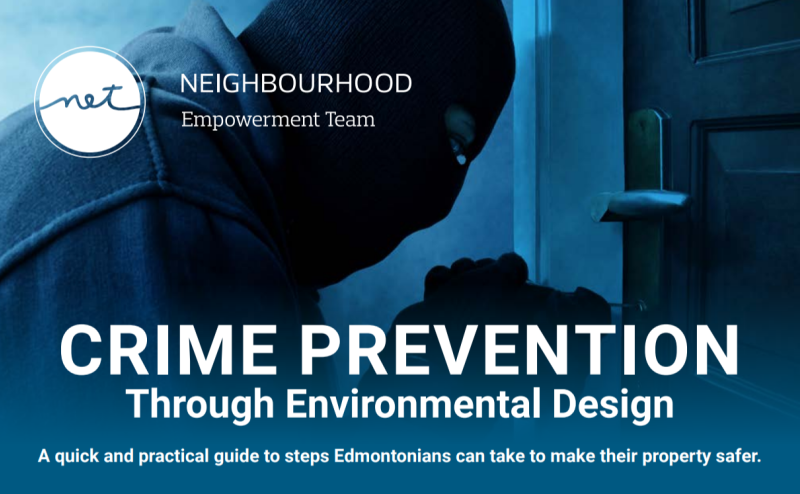Crime Prevention Through Environmental Design helps make communities safer through neighbourhood planning, development and maintenance.
Crime Prevention Through Environmental Design (CPTED) is a proactive approach to community safety. It works by using the physical characteristics of a space to influence behavior, thereby reducing crime and creating safer environments.
Crime Prevention Through Environmental Design deters criminal activity through:
- Natural surveillance: visibility, positive social activities
- Natural access control: entry and exit points, fences
- Natural boundaries: clear ownership, clearly marked private spaces
When evaluating neighbourhoods, use the 3 "D"s:
- Designation: What is the intended use of this space?
- Definition: Does the space have clear borders and ownership?
- Design: Does the physical design support the intended function?
Graffiti and Vandalism
- Clean up graffiti as soon as possible
- Use decorative landscaping, murals and lights to discourage tagging of buildings
- Avoid shrubs and other natural objects a person could hide behind
- Select trees that will allow for sight lines
Learn more about Graffiti Management.
Streets and Public Spaces
- Hold neighbourhood activities like block parties
- Ensure streets are pedestrian friendly
- Create streetscapes
- Calm traffic to reduce traffic flow and excessive speed
Parking Lots
- Clearly identify stairwells
- Post easy to see and read directional signs
- Reduce hiding spots with windows and mirrors
- Influence behaviours with bright, motivating, reflective colours on backgrounds
- Increase visibility with lights and sight lines
- Use security personnel and security systems
Trails and Parks
- Deny access to isolated areas
- Direct traffic
- Hold activities in the park
- Keep signs in good repair
- Redesign space to increase sight lines and to reduce hiding areas
- Clear transitional zones from public to private spaces
- Relocate gathering areas to places with the best natural sight lines and access control
Crime Prevention Through Environmental Design Self Assessment
This questionnaire introduces CPTED concepts and helps citizens assess their property's safety, offering strategies for improvement.
Related Links
Neighbourhood Empowerment Team (NET)
The Neighbourhood Empowerment Team responds to repeated or significant incidents that may impact the security and safety of Edmontonians across the city. Our aim is to reduce the fear of crime and social disorder amongst community members.
Safety and Security
We are continually improving our services and resources to help Edmontonians feel safe and be safe in their communities.
Community Safety and Well Being Strategy
The Community Safety and Well Being strategy was developed to help Edmonton become the safest city in Canada by 2030.
Edmonton Police Service CPTED Training Course
CPTED Basic is a three-day course, taught by Edmonton Police and other experts, introducing core principles of Crime Prevention Through Environmental Design. It demonstrates how altering the physical environment can reduce crime and influence behavior.


